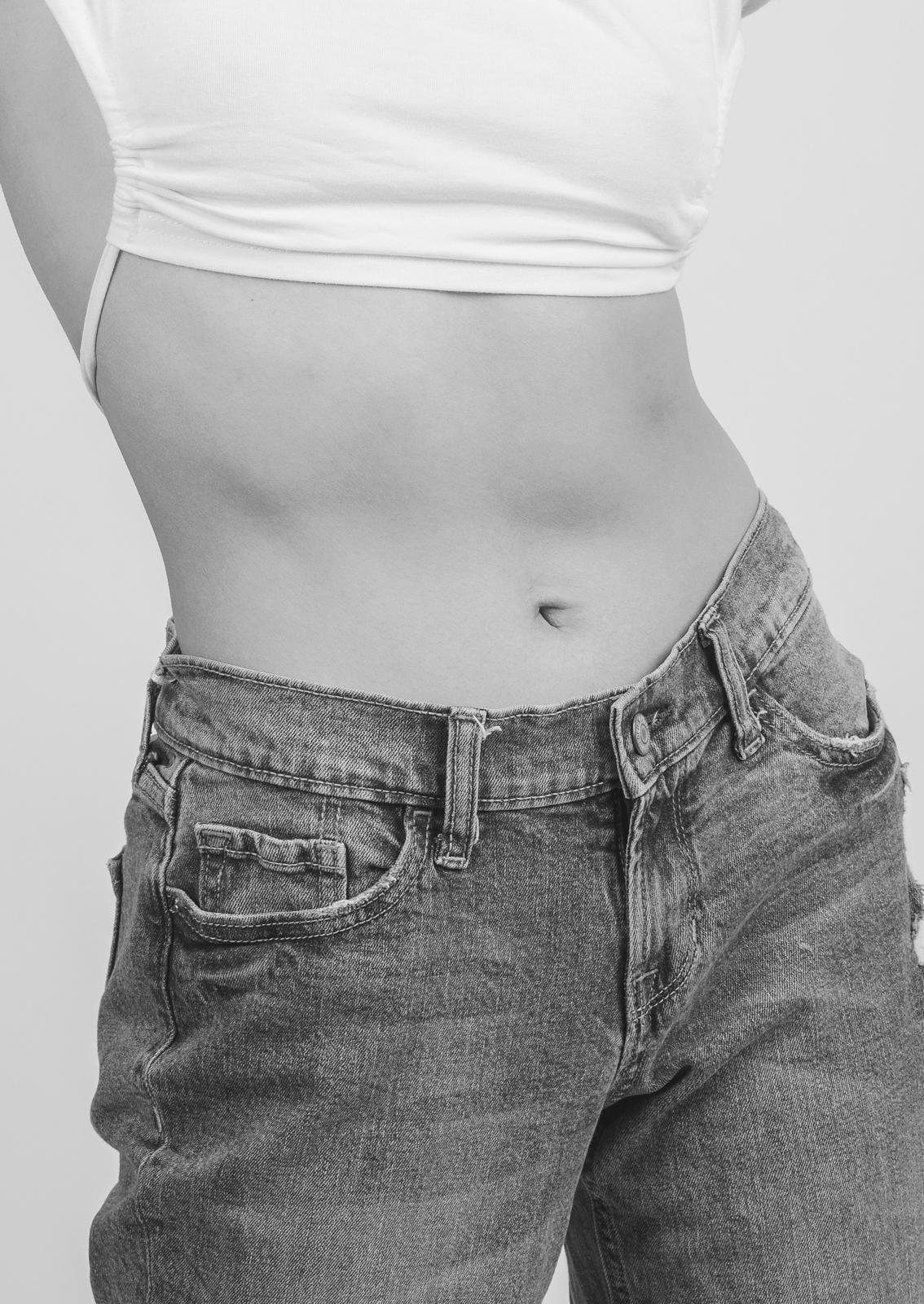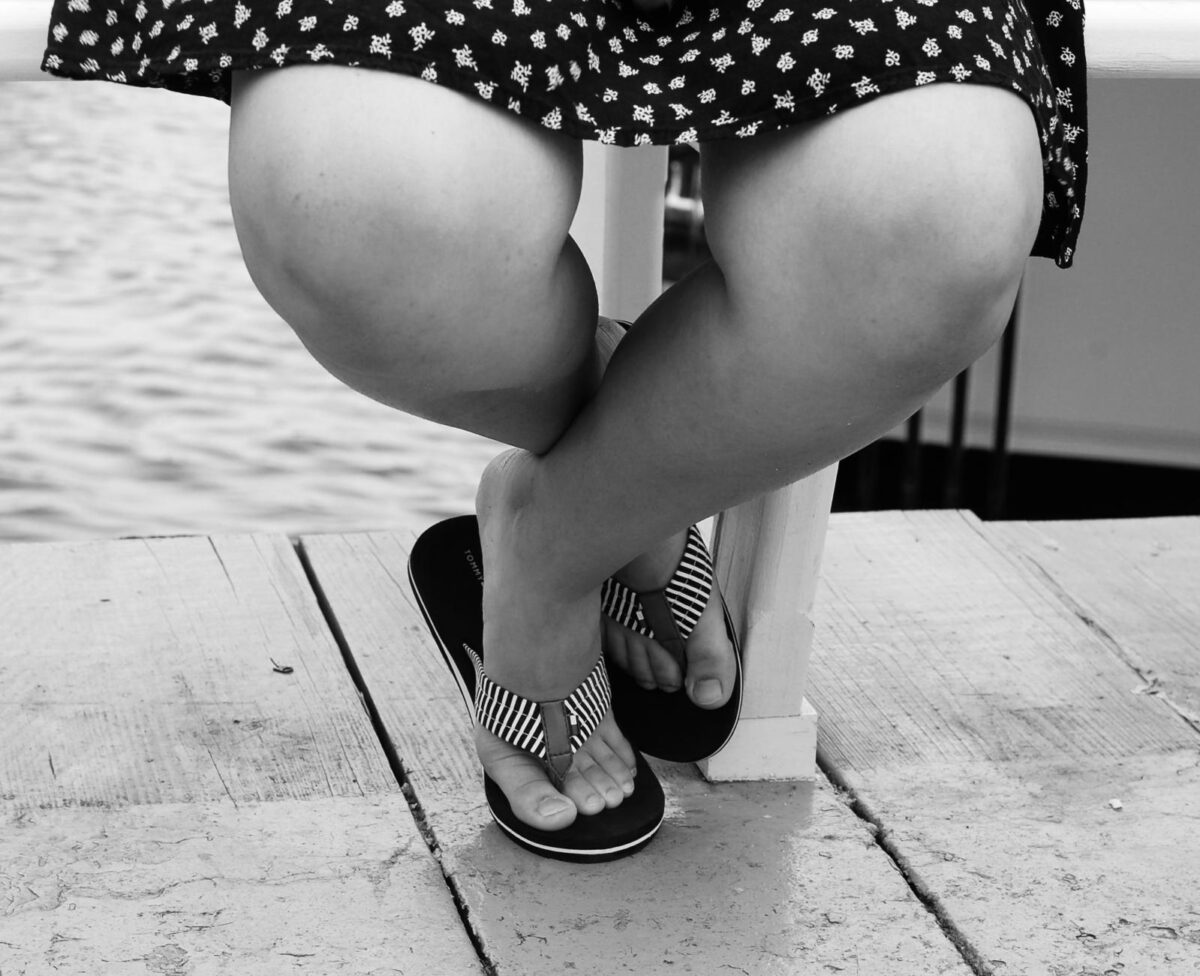Struggling with wrinkly knees can be a blow to your confidence, especially in your favourite outfits. While it’s a natural part of ageing, there are practical ways to smooth and strengthen your knee skin. From non-surgical treatments to everyday skincare tips, our guide covers all your options for restoring supple knees. Ready to say goodbye to ‘kninkles’? Keep reading.
Key Takeaways
- Collagen and elastin depletion with age contributes to wrinkles around the knees, but non-invasive treatments like microneedling, radiofrequency, and light therapies can stimulate production and smooth skin.
- Customised skincare routines tailored to individual needs are critical for knee rejuvenation, focusing on moisturising, exfoliating, and incorporating nutrient-rich foods for skin health.
- Combining different non-surgical treatments, such as injectable fillers, laser therapies, and PDO threads, can create customised solutions to effectively address knee wrinkles and sagging skin.
Understanding Wrinkly Knees: Causes and Concerns
Knee wrinkles, or ‘kninkles’, can become quite a concern as we age. Often, the culprit behind this is frequent stress on the knee area, such as regular kneeling, which leads to more pronounced wrinkles due to the repetitive stretching of the skin. As we get older, our skin, including that around our knees, naturally loses its elasticity, leading to sagging and wrinkles.
But why do we need to worry about wrinkly knees? Besides the obvious aesthetic concerns, wrinkles can also indicate skin health issues. A greater understanding of the causes and concerns linked to ‘kninkles’ can guide us towards effective treatments and preventative measures.
The Role of Collagen and Elastin in Knee Skin Health
Collagen and elastin, the vital proteins that uphold our skin’s elasticity and structure, contribute significantly to the smoothness and firmness of our knee skin. However, as we age, the natural production of these proteins decreases, leading to a loss of skin elasticity and structure. This manifests as sagging skin and wrinkles around our knees.
Encouragingly, treatments targeting collagen and elastin production can reduce age-related changes in our knee skin, thereby providing a smoother, firmer look.
Boosting Collagen Production Non-Invasively
When it comes to non-invasive procedures for enhancing collagen production, microneedling with PRP, radiofrequency, and light therapies stand out. For instance, Morpheus8 technologies utilise radiofrequency to heat the underlying skin tissues, stimulating new collagen formation. This leads to tighter, smoother skin.
Additionally, red light therapy can stimulate collagen growth, reduce wrinkles, and improve skin elasticity. There are options available for professional use, making it a popular choice for those seeking non-invasive treatments to enhance their knee skin health.
Enhancing Elastin Through Ultrasound Treatments
Upping the ante in non-invasive treatments, we have ultrasound. Treatments like Thermage FLX employ radiofrequency technology to heat skin deeply, stimulating new collagen formation and tightening existing collagen. This effectively treats wrinkles on the knees, resulting in firmer and more elastic skin with little to no downtime.
While generally safe, Thermage FLX treatments should be administered by trained professionals, as they can have side effects such as redness, swelling, or tenderness. However, patient feedback indicates visible improvements in skin firmness and a lifted appearance following these skin tightening treatments, showcasing the efficacy of radiofrequency in enhancing skin elasticity over time.
Personalised Skincare Regimens for Knee Rejuvenation
A personalised skincare routine tailored to one’s specific skin type can significantly aid knee rejuvenation. This should start with a basic regimen that includes a cleanser, an exfoliant, and a moisturiser. Implementing good skincare practices such as exfoliation and moisturising is key to preventing and minimising knee wrinkles. Hydrated skin responds better to being stretched; alongside internal hydration, using a hydrating topical cream can help maintain the skin’s moisture barrier, vital for knee rejuvenation.
Enhancing your skincare routine with toner post-cleansing, antioxidant serums, masks for specific concerns, and boosters for targeted care can offer benefits such as smoother skin, soothed redness, improved enlarged pores appearance, brighter skin, and faded signs of ageing. Incorporating foods high in antioxidants, healthy fats, and essential nutrients in your diet can also support skin health and aid in the prevention and reduction of wrinkles.
The concluding step requires trial and observation of skin reactions to fine-tune the amount, approach, and regularity of application to best meet your skin’s needs, as there are many factors that can influence the outcome. For further information, please refer to the provided guidelines.
Ablative Lasers
Ablative lasers, such as Erbium YAG and fractional CO2 lasers, offer another non-surgical solution for smoother, more youthful-looking skin. These lasers work by providing laser treatment that removes micro-layers of skin and stimulates cell renewal and collagen production. These non-surgical cosmetic procedures improve the appearance of deep wrinkles, providing smoother, more youthful-looking skin.
In addition to these, intense pulsed light (IPL) is used to treat sun spots and uneven skin texture. Its intense light stimulates more collagen and elastin, further enhancing the skin’s appearance.
Injectable Fillers: A Volumising Solution
Injectable fillers provide a volumising solution to knee wrinkles. Some options include:
- Radiesse
- Sculptra
- Neauvia’s Hydrodeluxe
- Profhilo Body Dermal fillers
These fillers often contain Hyaluronic acid, which helps to retain moisture and support collagen production, thereby adding volume and smoothing wrinkles in areas like the knees.
In addition to Hyaluronic acid-based fillers, other injectables like Sculptra and Lanluma have been used to stimulate collagen production and improve skin firmness around the knees. If results from Hyaluronic acid-based filler injections are unsatisfactory or side effects occur, the filler can be dissolved with a reversal agent called Hyaluronidase.
Lifestyle Adjustments to Prevent Further Wrinkling
Adopting a healthy lifestyle plays a significant role in averting additional knee wrinkling. This includes maintaining a healthy weight and strengthening the muscles around the knee through exercises, both of which can provide firmer support for the skin and help reduce the appearance of wrinkles.
To safeguard the skin and ward off new wrinkles, here are some tips:
- Employ sunscreen with a high SPF
- Don protective attire
- Maintain hydration through adequate fluid intake and consumption of water-rich foods
- Incorporate anti-inflammatory and antioxidant-rich foods into your diet to improve skin elasticity and promote collagen production in the bloodstream.
When to Consider Professional Consultation
Professional consultations are key in deciding the most suitable treatment plan and guaranteeing patient safety. These consultations are a critical phase where accurate diagnoses are formed, ensuring that the potential treatment outcomes are clearly outlined. Attentive listening and thorough information gathering during the consultation process are integral to proper diagnosis and patient safety. They help prevent misdiagnosis and associated risks.
Patients can enhance the quality of clinical consultations by:
- Being adequately prepared
- Ensuring clarity on discussions
- Bringing support if necessary
- Enquiring about test purposes, treatment options, side effects, and treatment timelines during the consultation
These steps can provide patients with a comprehensive understanding of their care.
Tailoring Your Treatment Plan: Combining Techniques
Combining different non-surgical procedures can lead to tailored treatments that effectively address specific skin concerns, such as wrinkles and sagging skin. For instance, laser therapy can be combined with chemical peels, or fillers can be combined with microneedling. Patient feedback indicates that combining Thermage FLX with other treatments like Hydrodeluxe dermal fillers enhances skin tightness and overall rejuvenation.
Personalised treatment plans minimise side effects and complications by considering the individual physiology and medical history of the client. A comprehensive initial consultation that encompasses the client’s:
- Medical history
- Current health status
- Lifestyle habits
- Particular goals and expectations
Understanding each individual’s needs is essential for customising the treatment plan to effectively restore volume.
PDO threads
PDO threads offer a non-surgical option to lift sagging skin and tighten it around the knees. They address skin sagging and wrinkles by inserting threads that stimulate collagen production, leading to firmer and more youthful-looking knee skin.
The threads used in this procedure are made of Polydioxanone (PDO), a biodegradable synthetic polymer that is absorbed by the body naturally, promoting collagen stimulation. They not only lift the skin but also stimulate the production of elastin and hyaluronic acid, which are essential for maintaining skin elasticity and hydration.
The insertion of PDO threads into the skin is a cosmetic procedure done using thin needles or cannulas after marking and applying local anaesthesia to the targeted area, making it minimally invasive with little discomfort.
Summary
There are numerous non-surgical solutions available to smooth and rejuvenate wrinkly knees, from boosting collagen production to implementing personalised skincare regimens, and from undergoing ablative laser treatments to receiving injectable fillers. Lifestyle adjustments and professional consultations also play crucial roles in ensuring the success of these treatments. While ‘kninkles’ might be a natural part of ageing, they don’t have to be a permanent fixture on your body. With the right care and treatment, you can confidently show off your knees again.
Frequently Asked Questions
How do I get rid of Crepey skin on my knees?
To get rid of crepey skin on your knees, consult a dermatologist for the best treatment options, which may include OTC products with retinol, prescriptions, radiofrequency, laser, ultrasound, fillers, or surgery. Additionally, using products with glycerin or hyaluronic acid can help improve the appearance of crepey skin by keeping it hydrated and plump.
How do you tone up saggy knees?
To tone up saggy knees, focus on targeting the quadriceps in the thighs through exercises such as lunges, squats, step-ups, and machine leg extensions. These exercises can help improve muscle tone and reduce the appearance of droopy knees.
Is Thermage FLX effective?
Yes, Thermage FLX is considered effective for tightening loose, saggy skin, and it is the latest and fourth generation of the device, offering improved results and faster, more comfortable treatments.
Are there lifestyle adjustments that can help prevent further knee wrinkling?
Yes, maintaining a healthy weight, strengthening the knee muscles through exercises, using high SPF sunscreen, wearing protective clothing, staying hydrated, and consuming anti-inflammatory and antioxidant-rich foods can all help prevent further knee wrinkling.





